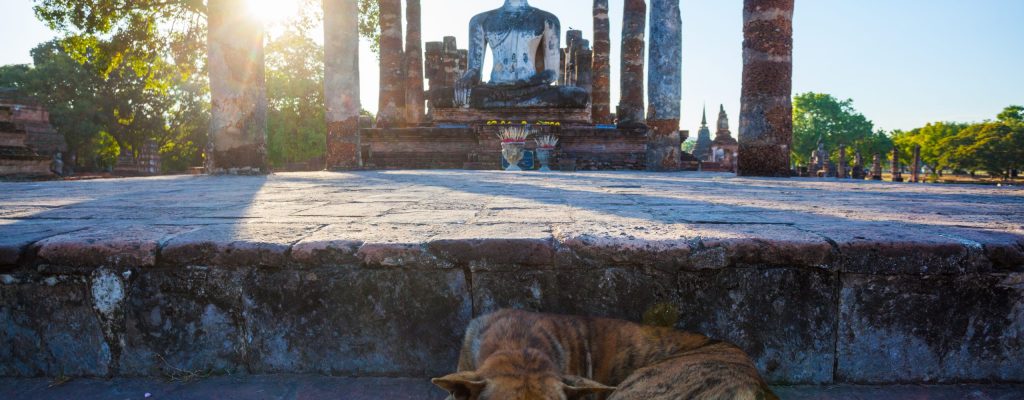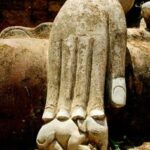“To Life …”
This morning I was inexplicably brought back to a memory of sitting on a small bench overlooking the bridge that crossed the pond at the Blue Dell Farm in Pemberton, NJ during a break, while at an NLP training with Roye Fraser. I’d gone there to study NLP with him, and discovered he was weaving a magical score with something he called “The Generative Imprint” using NLP to deliver and train in this model of transformational change he’d been developing for about a decade at that time.
This was an unusual way to teach NLP, not by a series of exercises to teach either concepts or techniques, like representational systems or swish patterns, but in what he called “wholeform” (something I’d come to appreciate more as I delved into the work of the quantum physicist David Bohm).
We’d all sit in the “Hypnotorium” Roye’s name for the room we worked in with him, that was a converted mechanics garage on the property he owned there in Pemberton. Roye would begin talking about something, then he’d ask us all “What do you want?” and someone would say or do something that would catch his attention and he’d “bring them up” … meaning he’d bring them to the front of the room and begin working with them. Not demonstrating a concept or technique, but using concepts and techniques to create profound transformational change with whomever he’d brought up tot he front.
Then we’d be instructed to “Go do the exercise.” … and, everyone in the room would be like, “What exercise?!!???” (even though the exercise was clearly spelled out on a flip chart with steps to take to do whatever it was that we’d be working on at that moment) … because, we’d just seen a seamless flow of concept and technique customized to the exacting needs of an individual that no one there at the time could hope to replicate. So we’d walk off, spellbound, to do our best to “Do the exercise.”
It was in the Hypnotorium with Roye that the phrase, “L’Chaim” uttered in a deep, resonant, voice with a ting of a South African accent, usually proceeded or followed by a deep, roaring burst of laughter, became etched in my mind.
“L’Chaim!” … TO LIFE!
The work Roye did was about “LIFE!” … discovering the wonder and joy of being alive … fully, completely and with abandon.
I took this on in my years of apprenticing with Roye, dedicating myself to helping others find for themselves “the wonder and joy of being alive … fully, completely and with abandon.”
“L’Chaim!”
Many times since those early years I myself uttered that phrase after completing a piece of work with someone … often to Jewish clients I’ve had who I hoped would recognize my toasting their new awakening to themselves, sometimes to gentiles like myself who I hoped would recognize the intention if not the literary meaning of the phrase.
A way I’ll often end a piece of work, or a training session, or even many of my posts is with the bastardized Italian-American, “Buona Fortuna and Abundanza!” … which I state as a prayer and a blessing, i.e.: “May you have good fortune and abundance in your life.” (there is no word “abundanza” in Italian, the Italian word is “abbondanza” meaning “plenty”).
Another phrase I picked up from Roye was his colorful way of sending folks off, “Go forth and fructify.” … said with a glint in his eye and a conspiratorial tone to his voice.
fruc·ti·fy
ˈfrəktəˌfī/
verbformal
verb: fructify; 3rd person present: fructifies; past tense: fructified; past participle: fructified; gerund or present participle: fructifying
1. make (something) fruitful or productive.
◦ bear fruit or become productive.
Origin:
Middle English: from Old French fructifier, from Latin fructificare, from fructus ‘fruit.’
You may think, “Ahhh, this Roye fellow was a very playful sort!” … and you my friend would be correct. But, you’d be missing the deadly serious side of him. He was playful only in respect to achieving the outcome, i.e.: to lead his clients to living their lives … fully, completely and with abandon.
More than anything that’s what I got from my years with Roye, first to, “ live my life fully, completely and with abandon” and then to commit to this as the first principal of the work I learned with him as I share it with others.
After some years I began to bring my own approach to this work to life, the MythoSelf Process. This model was born from drawing on some distinctions that came from my own personal history and the study of other intellectual and transformational giants … folks like the renowned mythologist Joseph Campbell, and the masterful somatic practitioner Moshe Feldenkrais, and seeing how our life stories are carried within us in word and deed.
I began to develop a unique way of working with folks using both transformational stories and subtle somatic interventions to shift the fundamental position of perception and decision making of the clients I work with today. This way of approaching transformational change that leads to breakthrough performance emerged from that early work I began learning with Roye in the Hypnotorium.
Roye taught me to attend to gross and subtle “idiosyncratic movement” aligned with “ideomatic phrases” … individualized ways people express something that is not easily captured in language and is highly unique to them personally. From this early training I began to notice something more about what I today refer to as “micro-muscular response” and “dynamic patterns of movement” … the basis of the Soma-Semantics model I’ve been developing and refining for the past thirty years.
In my observations with clients over tens of thousands of hours of doing work with them in training rooms, groups and one-to-one private work, I’ve noticed how deep values that guide perception, decision making and behavioral responses are reflected in the way the body configuration adjusts to reflect the mind of the individuals I’m working with irrefutably and absolutely.
As a person accesses these values, that are the basis of their personal identity, i.e.: what’s most meaningful to them before any conscious awareness or processing take place, they automatically and irrevocably make somatic adjustments that are the physical manifestations of what they are accessing.
The resulting somatic pattern generates a state change, or a way of being, that is consistent with the values and identity position they have been accessing.
This is a physical declaration of themselves, like a bold pronouncement, “I AM THIS!” … or at a more fundamental level of awareness that is barely conscious for them most of the time, “I AM!”
This then becomes the basis, or the ground, from which all the work that proceeds is built upon.
From this most fundamental, unspoken declaration of “I AM!” we work to extract the narrative form in story and in idiom, often expressed in paradoxical form, e.g.: “supple steel” … “calm intensity” … this is the semantic expression of the Soma-Semantic pair.
When these are firmly inhabited they individual who possesses them has the basis for accessing how they know themselves to be alive in the most fundamental and primal way possible (NOTE: to get here takes a bit of expertise and tradecraft).
This has now become the starting point … beginning the journey that follows, remaining always grounded in and tethered to the fundamental distinction of being alive …
fully, completely and with abandon …
—
“L’Chaim!”.
It’s not always so easy for clients who haven’t yet experienced the wholeform way of learning that is the basis for the MythoSelf Process and the Soma-Semantics model to see the value of investing in getting to this fundamental position from which to live their life.
Far too often folks are consumed with the urgency of the immediate …
– resolving some crisis that has arisen
– paying the bills
– sending the children off to school
– getting the next promotion, contract or client
– growing their business or practice
– caring for an elderly parent
– insuring their own future or legacy …
whatever is staring them in the face in the moment.
Yet, doing all these things, even extraordinarily well, will not bring you peace or peace of mind. These things will not satisfy the deep existential and ontological longings you have to know and live your purpose, and to fully manifest and express all you are capable of being.
And, despite the deep, compelling call of the adventure Jospeh Campbell speaks of in the Hero’s Journey … i.e.: to become fully human and realize yourself in all your magnificent splendor … most folks will pursue the urgent and trivial at the cost of the significant and substantial.
But, I persist because I have seen the difference that establishing the fundamental awareness and access to this way of being makes in every other moment of one’s life.
Instead of trying to “get somewhere” the basis of the work I do with clients is to have them stop where they are and experience themselves in this moment … fully, completely and with abandon.
This is difficult, I know.
To simply slow down enough to face yourself and come to the complex realization of where you are, how you and who you are in this moment … before rushing off to the next thing, or just proceeding to get on with your life.
However, all the accomplishments, achievements and accumulation of wealth and material success in your life will never satisfy you if you are missing this fundamental grounding in being fully , completely and with abandon present to yourself and your life as it is … right here, right now.
Then you can make the essential and substantive decisions you need to that will both satisfy your existential and ontological longings, giving your life meaning, purpose and direction … and, also ”get on with it”, knowing that where you are aiming yourself is a destination worth arriving at in the end.
Not having this one distinction in place keeps virtually everyone stuck without the hesitation, concern, worry, anxiety or fear that stops them from being able to “get on with it” … and create the life they desire and dream of for themselves, and those they care about and love.
Even when all the other pieces are seemingly in place, ignoring this crucial foundation for everything else will leave you at the top of having climbed the wrong ladder, and possibly with no way of getting back down to start over or the time left to do it if you could.
In fact, the greatest challenge is having enough success to dig in and fortify the position you’ve established, even when you sense that the peak you’re standing on isn’t one that serves you or those you truly care about and love.
Here’s the good news …
I’ve worked with enough folks, from 5 – 95, to know that remembering the deep call to life … your source code to living fully, completely and with abandon … is available to you regardless of where you find yourself standing today.
You may have to give up some of what you have, to get what you truly and deeply want, but the reward is worth the sacrifice every time.
The realization of yourself, and the potency of action that comes with that release, will allow you to build the significance and substance you desire in your life, both on your own and with others.
If you are ready there is a way …
“L’Chaim!” … it’s still ringing in my ears after all this time.
With grace and humility,
Joseph Riggio, Ph.D.
Architect & Designer of the MythoSelf Process and SomaSemantics
(On a snowy morning from) Parsippany, NJ
P.S.: If you’re interested in exploring experience Foolish Wisdom with me live in Lambertville, NJ, 2-days Live, Saturday & Sunday, 31 March/1 April (or join me for just one day on Saturday, 31 March).
BUONA FORTUNA AND ABUNDAZA!










